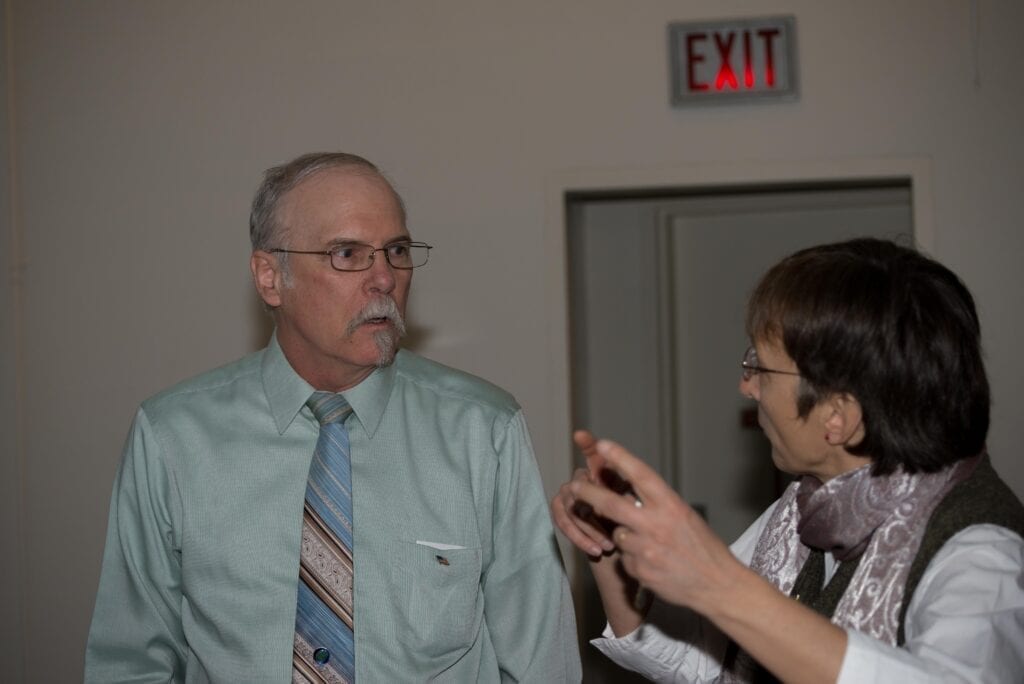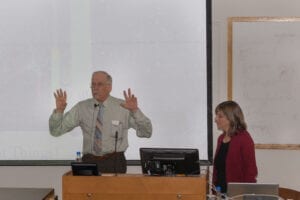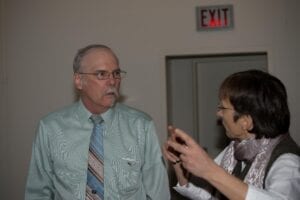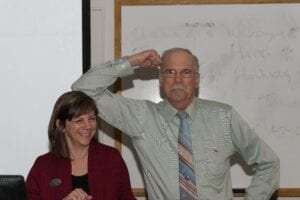McClung Museum holds lecture on archaeology in Cumberland Gap
Lecture discusses history and future archaeological excavation in the Cumberland Gap.

Tom Des Jean and Dr. Aleydis Van De Moortel speak after a lecture at the McClung museum on archaeology in the Cumberland Gap. // Photo by Ryan McGill
McClung Museum held a lecture on archaeology in the Cumberland Gap Wednesday, March 4.
Charles Finney, president of the Archaeology Institute of America (AIA) East Tennessee Society, introduced speakers Tom Des Jean and Martha

Wiley, whom began with the history of the Gap.
Des Jean, who was with park services at Big South Fork for 28 years, began the lecture by giving information on the location and the formation of the Cumberland Gap.
“The importance of the Gap is that it opened up an access corridor across the Appalachian Plateau,” he said.
Wiley, a historian at Cumberland Gap, talked about several people passing through the Gap because it allowed for easier colonization.
“We also know that Abraham Lincoln’s father and mother came through the Gap westward bound when they were children,” Wiley said.
The speakers then led into the Civil War, where both armies battled for control of the Gap.
“The Confederacy were the first to occupy the Gap,” said Des Jean. “…but soon they were

dislodged by the federal army in the Ohio.”
The Confederacy continued to control the Gap until the Union forces gained control.
“It was through this tug of war that both armies established campsites in the saddle of the Gap and artifacts were found here in abundance,”
said Des Jean.
Such artifacts found include flint, cannonballs and soldier graffiti.
“We know a lot more about our Civil War history through graffiti found within the Gap,” said Wiley.
Although many artifacts have been found, Des Jean described the difficulty deflation and debris fields cause when attempting to find and excavate artifact locations.

Because of this, bridges and other structures are built to avoid future damage to sites.
After the Civil War, reoccupation began in the Gap, with the building of hotels, settlements such as the Hensley Complex, and several companies.
The Gap now holds a multitude of tourist attractions and views while still seeing its fair share of archaeological excavations.
Although much has been found, there is still much more to be discovered and documented. For example, Des Jean said Native American artifacts are difficult to come by.
“The artifact that I would like to see would be an excavation that would have a whole lot of data and artifacts that gives us a much bigger picture of the Native American use of that particular area,” Des Jean said.
Following the lecture, a reception was held where attendee Randy Hartwig said he enjoyed “the combination of history and archaeology.”
Edited by Hannah Hunnicutt

